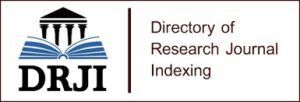FACTORS INFLUENCING MORPHOGENIC VARIATIONS IN 2D:4DRATIO AMONG THE THREE MAJOR NIGERIAN ETHNIC GROUPS (HAUSA, IGBO AND YORUBA) RESIDING IN JOS
Objective; This study was conducted to appraise the values of the 2D and 4D digit ratios and correlate them with other anthropometric variables and see what factors are responsible for their variations. The anthropometric study of the index (2D) and Ring (4D) digit of Hausa, Yoruba, and Igbo who resides in Jos was carried out.
Materials and Methods. A cross-section descriptive survey design was used to select three hundred participant from each tribe. They were randomly selected, excluding those with finger deformities. Fifty males and fifty females were selected from each of the three ethnic groups. The index 2D and ring 4D digits were measured from the basal crease to the tip using a vernier calliper, and the height and weight were measured. A questionnaire was designed by the researcher, administered, and retrieved. The data gathered was organized and presented using a descriptive statistical method. Frequency distribution table with results presented in percentages were used for the data analysis. The result showed that morphorgenic variation in 2D:4D ratios is sexually dimorphic in the three tribes, males demonstrated lower digit ratio. It might also be influenced by hormones testosterone and estrogens in males and females respectively, other factors are ethnicity, height, age, and weight.
Results; Findings reveals, the Igbo ethnic group seems to have high 2D 4D ratio than the Hausa and Yoruba Ethnic group while the Hausa 2D 4D ratio is higher than the Yoruba. Environmental factors has little or no significant influence on the 2D 4D digit ratio.
Conclusion; The digit ratio amongst Hausa, Yoruba, and Igbo is sexually dimorphic and might not necessarily be affected by tribes or ethnicity.
Keyword; morphogenic variations, 2d:4d , ethnic groups, Anthropometry




















